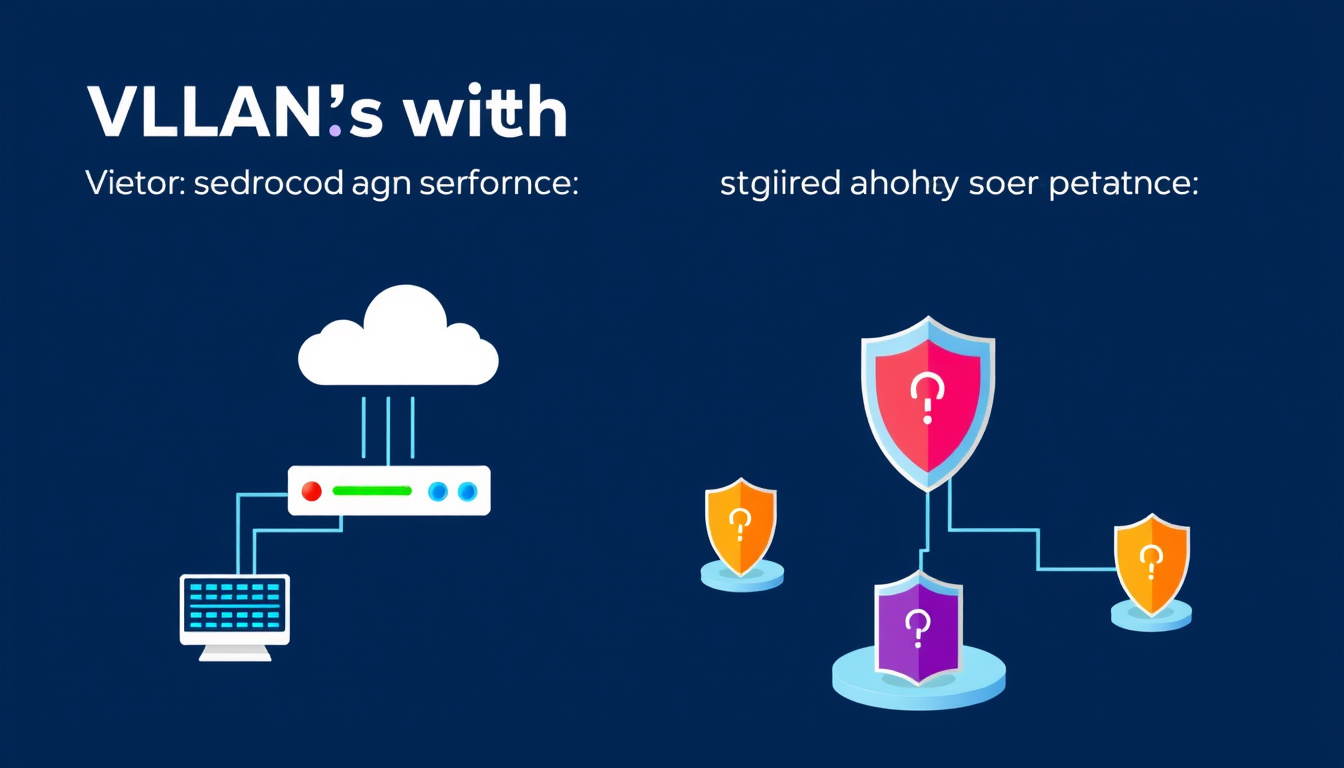In today’s digital age, efficient network performance and security are paramount concerns for businesses and organizations. One technology that plays a crucial role in achieving these objectives is the Virtual Local Area Network (VLAN).

This article will explore what VLANs are, their functionalities, use cases, configuration methodologies, advantages, and potential challenges that come with their deployment.
What is a VLAN?
A VLAN (Virtual Local Area Network) is a logical subdivision of a computer network that allows devices to be grouped together, even if they are not on the same physical switch or network segment. VLANs operate at Layer 2 of the OSI model, which means they primarily manage data at the data link layer. By tagging Ethernet frames with VLAN identifiers, network administrators can create isolated networks within a single physical infrastructure. This partitioning enhances traffic management, security, and scalability without extensive hardware modifications.
Key Benefits of Using VLANs
-
Improved Network Performance: VLANs can significantly reduce unnecessary broadcast traffic since broadcasts from devices in one VLAN do not reach devices in another. This leads to better performance as each device only processes relevant traffic, allowing for increased efficiency across the network.
-
Enhanced Security: By segmenting the network, VLANs allow administrators to control access between different groups of devices. Sensitive information can be restricted to specific VLANs, preventing unauthorized access and enhancing the overall security posture of the network.
-
Simplified Network Management: VLANs facilitate easier management tasks. Network administrators can logically group devices based on criteria like departments or functions, simplifying tasks like configuration and troubleshooting.
-
Flexibility and Scalability: VLANs provide the liquidity to reconfigure operations rapidly, adapting to various business needs without the need for physical alterations. They can efficiently manage the growth of network infrastructure through segmentation.
-
Cost Efficiency: By allowing multiple virtual LANs to use the same physical hardware, organizations can reduce expenses related to networking equipment such as switches and routers.
Types of VLANs
VLANs can be categorized into different types based on how they are configured:
-
Static VLANs (Port-based): These VLANs assign specific switch ports to VLANs. Devices connected to those ports will only be able to communicate with each other within the same VLAN.
-
Dynamic VLANs (Use-based): In dynamic configurations, VLAN memberships are assigned based on attributes such as MAC addresses or authentication credentials, allowing for a more flexible setup.
Practical Use Cases of VLANs
-
Segregating Network Traffic: For instance, in an organization, HR and Finance departments can be allocated their separate VLANs, ensuring they do not have direct access to each other’s sensitive data.
-
Voice Over IP (VoIP): Allocating a VLAN specifically for VoIP ensures bandwidth is prioritized for voice traffic, which is crucial for maintaining call quality.
-
Guest Networks: Organizations can create VLANs for guest internet access, isolating guest traffic from the main corporate network, thereby enhancing security.
Configuration and Implementation
Setting up VLANs involves several steps:
-
Define VLAN IDs: Each VLAN is assigned a unique identifier (VLAN ID), which must be configured on the network switches.
-
Assign Ports to VLANs: Ports on switches must be assigned to the appropriate VLANs, which can often be accomplished using command-line configurations.
-
Implement VLAN Trunking: When multiple VLANs share a single communication line, trunking is necessary. This involves configuring trunk ports to carry traffic from various VLANs simultaneously.
-
Dynamic VLAN Management: Using protocols like IEEE 802.1Q, frames can be tagged with a VLAN identifier at the Ethernet layer.
Potential Challenges of VLANs
While VLANs offer numerous advantages, they also come with challenges:
-
Complexity in Management: Managing VLANs in large, dynamic environments can become complicated, requiring a solid understanding of network infrastructure.
-
Scalability Limits: VLANs are often constrained by a maximum of 4,096 VLAN IDs per switching domain, which might not suffice for expansive networks.
-
Security Risks: Although VLANs enhance security, they are not foolproof. Without proper configurations and monitoring, they can be susceptible to attacks like VLAN hopping.
Conclusion
VLANs are integral to modern networking, offering an effective solution for managing network segmentation that improves performance, security, and administration. By understanding how to thoughtfully implement and manage VLANs, organizations can harness their power to drive better network performance and security, adapting to the evolving needs of their business operations. As network technologies advance, embracing VLANs will remain a critical strategy for effective network management.



